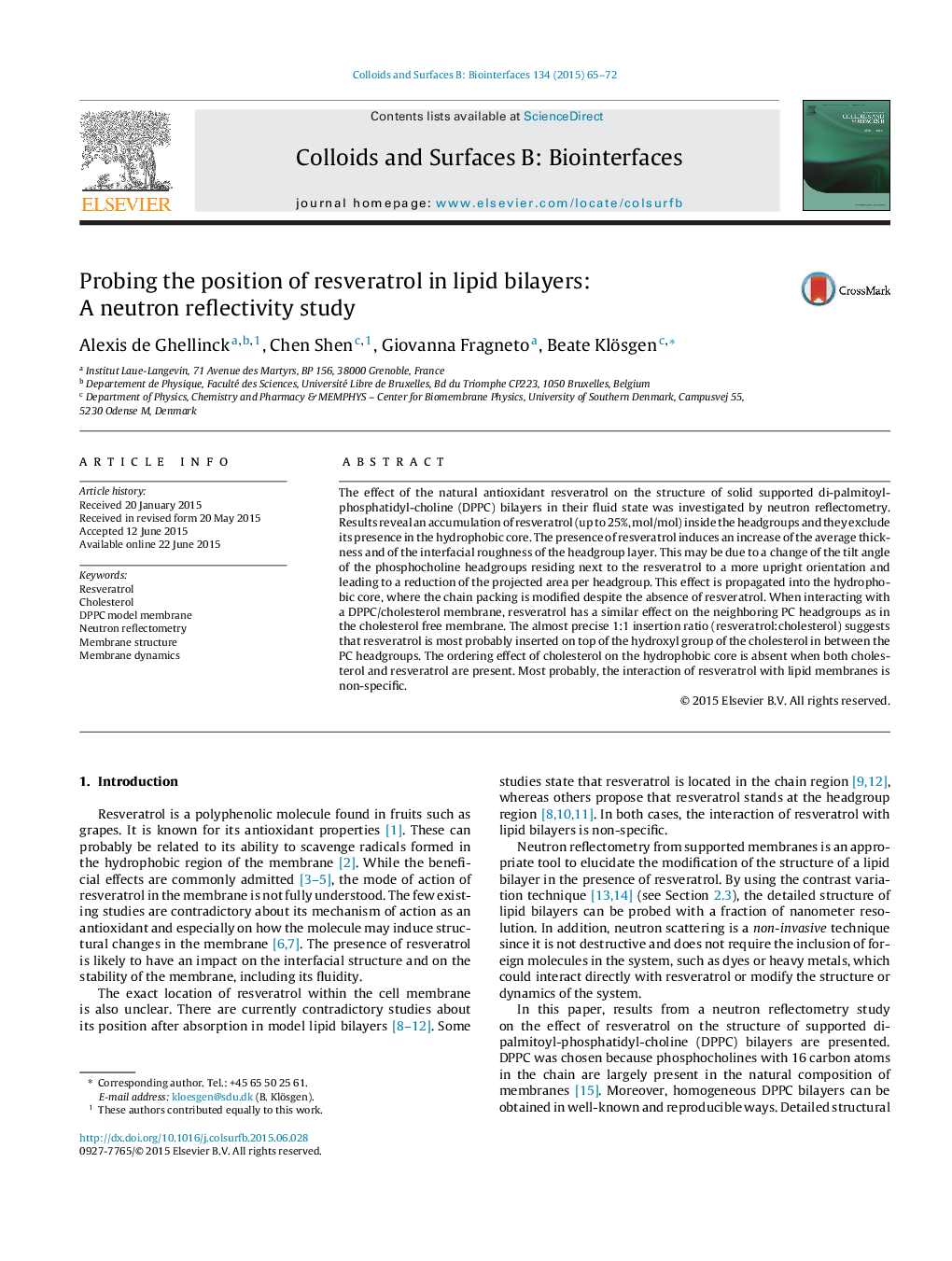| Article ID | Journal | Published Year | Pages | File Type |
|---|---|---|---|---|
| 599361 | Colloids and Surfaces B: Biointerfaces | 2015 | 8 Pages |
•Resveratrol accumulates in between the headgroups of a lipid membrane.•In the presence of resveratrol, headgroups are turned toward the bilayer normal.•No resveratrol is transferred across the bilayer.•The structural change in the headgroup region is propagated into the chain region.•The presence of resveratrol compromises the ordering effect of cholesterol.
The effect of the natural antioxidant resveratrol on the structure of solid supported di-palmitoyl-phosphatidyl-choline (DPPC) bilayers in their fluid state was investigated by neutron reflectometry. Results reveal an accumulation of resveratrol (up to 25%, mol/mol) inside the headgroups and they exclude its presence in the hydrophobic core. The presence of resveratrol induces an increase of the average thickness and of the interfacial roughness of the headgroup layer. This may be due to a change of the tilt angle of the phosphocholine headgroups residing next to the resveratrol to a more upright orientation and leading to a reduction of the projected area per headgroup. This effect is propagated into the hydrophobic core, where the chain packing is modified despite the absence of resveratrol. When interacting with a DPPC/cholesterol membrane, resveratrol has a similar effect on the neighboring PC headgroups as in the cholesterol free membrane. The almost precise 1:1 insertion ratio (resveratrol:cholesterol) suggests that resveratrol is most probably inserted on top of the hydroxyl group of the cholesterol in between the PC headgroups. The ordering effect of cholesterol on the hydrophobic core is absent when both cholesterol and resveratrol are present. Most probably, the interaction of resveratrol with lipid membranes is non-specific.
Graphical abstractFigure optionsDownload full-size imageDownload as PowerPoint slide
